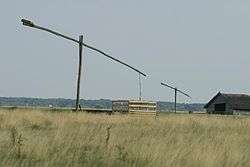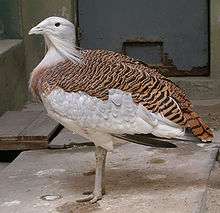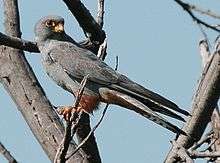Hortobágy National Park
| Hortobágy National Park - the Puszta | |
|---|---|
| Name as inscribed on the World Heritage List | |
 | |
| Type | Cultural |
| Criteria | iv, v |
| Reference | 474 |
| UNESCO region | Central Europe |
| Inscription history | |
| Inscription | 1999 (23rd Session) |

Hortobágy (Hungarian pronunciation: [ˈhortobaːɟ]) is an 800 km2 national park in eastern Hungary, rich with folklore and cultural history. The park, a part of the Alföld (Great Plain), was designated as a national park in 1973 (the first in Hungary), and elected among the World Heritage sites in 1999.[1] The Hortobágy is Hungary's largest protected area, and the largest semi-natural grassland in Europe.[2]
Until recently it was believed that this alkaline steppe was formed by the clear cutting of huge forests in the Middle Ages, followed by measures to control the course of the Tisza River, allegedly resulting in the soil's current structure and pH. However, Hortobágy is much older, with alkalinization estimated to have started ten thousand years ago, when the Tisza first found its way through the Great Hungarian Plain, cutting off many streams from their sources in the Northern Mountains. The formation was finished by grazing animals and wild horses during the Ice Age, followed by domesticated animals.[3]
One of its most iconic sites is the Nine-holed Bridge. Traditional T-shaped sweep wells dot the landscape, as well as the occasional mirage of trees shimmering in the reflected heat of the Puszta. Part of the national park is a dark sky preserve.[4]
Hortobágy has also had negative connotations. Hortobágy was a place where Hungarian Stalinists sent their political opponents to work in forced labour, especially after the Resolution of Informbiro (Cominform or Communist Information Bureau). In much the same way as prison Goli otok functioned in Tito's Yugoslavia (see Tito–Stalin split) and Bărăgan in Romania.[5][6]
Flora and fauna
Hortobágy is a steppe, a grassy plain with Hungarian Grey cattle, racka, water buffalo, and horses tended by herdsmen. It provides habitat for various species including 342 species of birds. The red-footed falcon, stone curlew, great bustard and aquatic warbler are represented by breeding populations. The area is an important stopover site for migrating common cranes, dotterels, and lesser white-fronted geese.[7]
Hortobágy is also a centre for the breeding of Taurus cattle, one of several ongoing attempts to breed back the aurochs.[8][9]
Picture gallery
See also
Notes
- ↑ "Hortobágy National Park - the Puszta". UNESCO World Heritage Centre. UNESCO. Retrieved 2010-06-21.
- ↑ A Világörökség Bizottság 26. Ülése
- ↑ "Hortobágy National Park, The Hungarian Puszta" (PDF). Nomination file for inscription of the Hortobágy National Park to the World Heritage List. Ministry for Environment and Regional Policy, Republic of Hungary. 1999. pp. 4–5. Retrieved 2010-06-21.
- ↑ "Hortobágy National Park (Hungary)". darksky.org. Retrieved 2016-10-18.
- ↑ dr. Barić, Ernest. "Jezik Hrvata u Mađarskoj" [Language of Croats in Hungary] (in Croatian). Retrieved 2010-06-21.
...a dio svjesnih Hrvata odveden na prisilni rad u Hortobágy (mađarski Goli otok)
- ↑ "Ce zicea Tito, ce povestea Dej..." (in Romanian). 2007-05-08. Retrieved 2010-06-21.
In duminica de Rusalii a anului 1951, de pe granita noastra cu Iugoslavia au fost “dislocati in Baragan” circa 50.000 de “titoisti”. In aceeasi zi, mii de maghiari au fost deportati in pusta Hortobagy.
- ↑ Lengyel S, Tar J, Rózsa L (2012). "Flock size measures of migrating Lesser White-fronted Geese Anser erythropus" (pdf). Acta Zoologica Academiae Scientiarum Hungaricae. 58: 297–303.
- ↑ Margret Bunzel-Drüke: ″Projekt Taurus – En økologisk erstatning for uroksen.″ Translated into Danish by Karsten Thomsen. Lohne: ABU 2004; Århus: Nepenthes, 2005. Retrieved 26 November 2013. (Danish)
- ↑ Waltraut Zimmermann, Lydia Kolter, Istvan Sandor: Naturschutzprojekt Hortobágy – Jahresbericht 2003. Zeitschrift des Kölner Zoo 2004. Retrieved 26 November 2013. (German)
References
- Gorman, Gerard (1996): The Birds of Hungary. Helm (A&C Black) London, UK. ISBN 0-7136-4235-1.
External links
| Wikimedia Commons has media related to Hortobágy National Park. |
- Hungary for Visitors description
- Magyarország.hu description
- National Park Hortobágy - The Puszta description
- Awarded "EDEN - European Destinations of Excellence" non traditional tourist destination 2008
Coordinates: 47°36′N 21°06′E / 47.600°N 21.100°E


.jpg)



.jpg)





